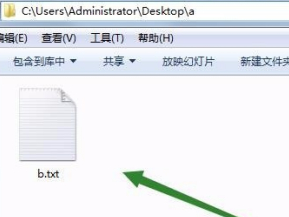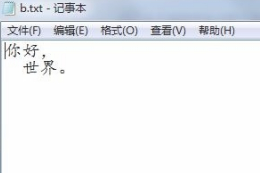python open() 函數以指定模式打開一個文件,創建一個 file 對象,相關的方法才可以調用它進行讀寫。
w 模式表示打開一個文件只用于寫入。如果該文件已存在則打開文件,并從開頭開始編輯,即原有內容會被刪除。如果該文件不存在,創建新文件。
write() 方法用于向文件中寫入指定字符串。在文件關閉前或緩沖區刷新前,字符串內容存儲在緩沖區中,這時你在文件中是看不到寫入的內容的。
實現代碼:
|
1
2
3
4
|
#!/usr/bin/python# -*- coding:utf-8 -*-file = open('C:/Users/Administrator/Desktop/a/b.txt','w')file.write('你好,\n 世界。') |
結果:

打開這個文本可以看到內容成功寫入。

知識點擴充:
Python批量修改文本文件內容的方法
Python批量替換文件內容,支持嵌套文件夾
|
1
2
3
4
5
6
7
8
9
10
11
12
13
14
15
16
17
18
19
|
import ospath="./"for root,dirs,files in os.walk(path):for name in files:#print nameif name.endswith(".html"):#print root,dirs,name filename=root+"/"+namef=open(filename,"r")filecontent=""line=f.readline() while line:l=line.replace(":/arcgis_js_api","/arcgisapi")filecontent=filecontent+lline=f.readline()f.close()f=file(filename,"w")f.writelines(filecontent)f.close() |
以上就是python創建文本文件的簡單方法的詳細內容,更多關于python怎么創建文本文件的資料請關注服務器之家其它相關文章!
原文鏈接:https://www.py.cn/jishu/jichu/19956.html










